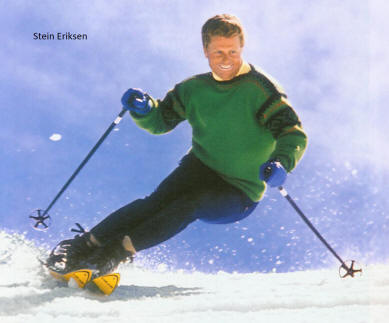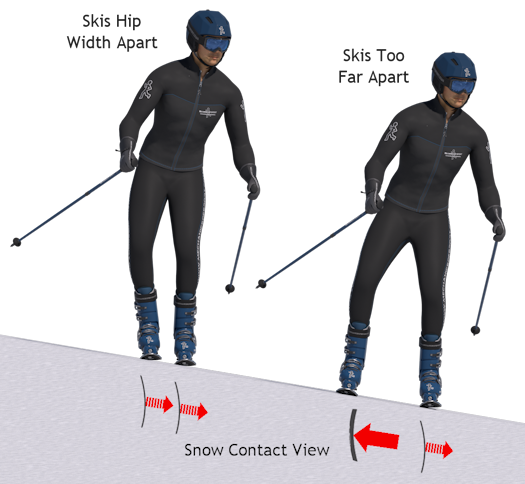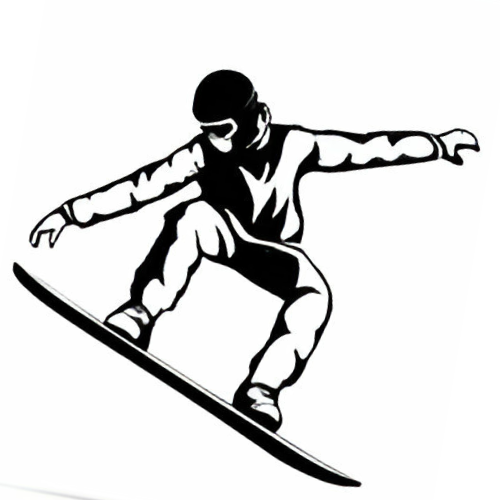To keep skis together, use ski straps or a ski lock at the brakes or bindings. Ensure they are tight enough to prevent separation.
Carrying your skis can be a hassle, especially if they constantly slide apart. Managing your equipment efficiently is crucial, whether you’re headed to the slopes or storing your gear for the next adventure. Skiers often look for practical ways to keep skis together for ease of transport and protection.
Ski straps, specifically designed for this purpose, are a popular choice as they secure the skis snugly without causing damage. Using these straps effectively can help maintain your skis in good condition and prevent any unnecessary wear and tear. Remember to choose a reliable method that works well for your specific ski setup. Good ski maintenance includes proper storage, and keeping your skis together is the first step in this process.

Credit: www.explorebigsky.com
Essential Ski Handling Skills
Mastering the art of ski handling keeps skis secure and prevents accidents.
Whether moving across the mountain or packing up for the day,
safe ski handling is crucial. It protects your gear and helps others on the slopes.
Here are the skills you need to keep your skis together and manage them properly.
Safe Transport On Slopes
- Use ski straps to bind your skis together. They should be snug but not too tight.
- Position skis base-to-base with ski brakes locked down.
- Carry skis over your shoulder, with the tips pointing forward and up.
- Always stay alert of your surroundings to avoid hitting someone with your skis.
- Keep a balanced stance while walking to prevent falls or dropping your skis.
Employing these practices on the slopes ensures safe ski transport.
Not only do they protect your equipment, but they also safeguard others around you.
Equipment Management Off The Mountain
- Clean your skis after each use to remove dirt and grime.
- Dry your skis thoroughly to prevent rust on the edges and bindings.
- Store skis in a cool, dry place to maintain their condition.
- Regularly check bindings for any needed adjustments or repairs.
- Join tips and tails together using a rubber band or strap before storage.
Off the slopes, proper equipment management ensures that your skis remain ready for your next adventure.
Simple steps can extend the life of your skis and enhance your skiing experience.
Choosing The Best Ski Straps
Skis can be cumbersome to carry without the right tools. Enter ski straps, the simple yet effective way to keep your skis together. Not all ski straps are created equal, though. Picking the best ones can mean the difference between a hassle-free trip to the slopes and an annoying start to your ski day. Let’s dive into what makes the best ski straps stand out.
Size And Material Considerations
The right size and material are crucial for ski straps. They need to fit your skis snugly without being too tight. A good strap should be adjustable, catering to various ski widths.
Look for a strap with high-quality material such as nylon or rubber. These materials ensure your straps won’t tear or lose their grip in cold temperatures. The right material also protects your ski’s surface from scratches.
- Adjustable length for different ski types and sizes
- Soft lining to prevent scratching ski surfaces
- Weather-resistant materials for longevity
Durability And Reliability Factors
Durability in ski straps is essential. You want straps that can withstand the rigors of ski transport. Look for straps with strong stitching and sturdy buckles.
Reliable straps keep your skis together even if you drop them. They won’t snap or come loose. This reliability gives you peace of mind as you move from car to slopes.
| Feature | Benefit |
|---|---|
| Reinforced stitching | Enhances strap strength and life |
| Heavy-duty buckles | Ensures the strap stays closed |
| Anti-slip design | Keeps skis together securely |
Picking the best ski straps is simple with the right knowledge. Consider size, material, durability, and reliability. Straps that check these boxes make trips to the mountain a breeze.
Diy Solutions For Ski Security
DIY solutions for ski security keep your gear safe and intact when you’re on the go. With the right materials and a bit of creativity, securing your skis is straightforward and effective. Let’s dive into easy solutions you can craft at home.
Utilizing Velcro Straps
Velcro straps offer a simple yet robust way to hold your skis together. Here’s how to use them effectively:
- Measure the circumference of your bundled skis.
- Choose a Velcro strap length slightly longer than this measurement.
- Wrap the strap firmly around the skis.
- Press the Velcro together to secure the hold.
Opt for wide, durable Velcro straps for a better grip. This approach prevents skis from sliding apart during transport.
Creating Custom Ski Ties
Designing custom ski ties adds a personal touch to your gear. Follow these steps:
- Gather materials like strong fabric, elastic, or old belts.
- Cut the material to the length needed for your skis’ size.
- Add fasteners such as buckles or hooks and loops.
- Wrap the tie around your skis and secure.
Ensure good fit and tension to keep skis snug. Custom ski ties also help in identifying your skis quickly.
| Material | Length | Fastener Type |
|---|---|---|
| Fabric | Measure skis’ circumference + extra for grip | Buckles/Hooks |
| Elastic | Shorter than skis’ circumference for stretch | Velcro/Loops |
Commercial Ski Locks And Their Use
Ski enthusiasts often invest in commercial ski locks to protect their gear. With these locks, skiers can enjoy the après-ski scene with peace of mind, knowing their skis are safe. Let’s delve into the popular types of ski locks and best practices for securing skis against theft.
Types Of Ski Locks Available
Different ski locks cater to various needs and preferences. Choosing the right one is crucial for optimum security.
- Cable locks: Flexible and easy to use, cable locks are a common choice for skiers.
- Key locks: These traditional locks open with a key, offering a familiar and reliable option.
- Combination locks: They provide a key-free experience with a personal code to unlock.
Select a lock that blends convenience with security.
Secure Your Skis Against Theft
To safeguard skis, follow these tips:
- Choose a well-trafficked area: Thieves avoid busy spots.
- Lock skis correctly: Pass the lock through both skis and a sturdy rack.
- Make skis unattractive: Cover brand logos to make them less enticing.
Consistency is key. Always secure skis, even for quick stops.
Proper Technique For Carrying Skis
Tackling the snowy slopes starts with getting your skis to the mountain safely. Understanding the Proper Technique for Carrying Skis is critical. Not only does it protect your gear, but it also ensures safety for you and others.
Shoulder Carry Method
Shoulder carrying your skis is a popular choice. Follow these simple steps:
- Place the skis base-to-base. Make sure the brakes are locked together.
- Slide one arm between the bindings. Let the skis rest on the shoulder, with the ski tips pointing upward.
- Hold the outside ski with your hand. This keeps them secure.
- Keep your back straight. Walk with confidence.
Balanced Hand Carry Approach
The Balanced Hand Carry Approach requires good grip. Here’s how you do it:
- Lock the brakes together. This prevents skis from sliding apart.
- Stand the skis upright. Hold them at the binding area.
- Keep your arm extended. Avoid dragging the skis’ tails.
- Switch hands if necessary. Balance the weight to avoid strain.
Expert Tips For Ski Maintenance
Welcome to the ultimate expert guide for ski maintenance! Keeping your skis in peak condition extends their life and improves your performance on the slopes. Let’s dive into some professional advice to ensure your skis stay together and ready for action.
Pre-season Preparation
Before the snow calls, your skis need a bit of TLC.
- Check your bindings – Make sure they’re tight and ready to go.
- Examine ski surfaces – Look for any damage or wear.
- Wax on – A fresh coat of wax protects your skis.
- Edge care – Smooth edges mean better control.
Professional ski technicians recommend a yearly check-up. This ensures safety and optimal performance. Remember, a well-prepped ski is a happy ski!
End-of-season Storage
As the season wraps up, proper storage maintains ski integrity.
- Clean thoroughly – Remove all dirt and grime.
- Apply storage wax – It keeps the bases moist.
- Loosen bindings – This preserves spring tension.
- Find a cool, dry place – Avoid moisture and sunlight.
| Task | Importance |
|---|---|
| Base Repair | Fixes small gouges and scratches. |
| Edge Tuning | Maintains precise cutting ability. |
By following these simple steps, your skis will remain in top shape. They’ll be ready the moment the first snow falls. Take pride in your gear and give it the care it deserves!
Innovative Ski Racks And Storage
Innovative ski racks and storage solutions are essential for any ski enthusiast. Keeping your skis neatly together not only protects them from damage but also saves space.
Ease of access and organization are key benefits of these systems. Let’s explore some of the best ways to store your skis.
Wall-mounted Solutions
Wall-mounted ski racks are a great way to save floor space. These racks secure skis above the ground, preventing accidental trips and falls.
- Simple installation: Often requiring only a few screws.
- Space efficiency: Skis hang vertically or horizontally.
- Variety of designs: To fit any decor or space constraints.
Models with padded arms ensure skis remain scratch-free. Look for racks that can adjust to fit different ski sizes.
| Feature | Benefit |
|---|---|
| Adjustability | Accommodates various ski sizes |
| Weight Capacity | Holds multiple pairs securely |
| Design | Integrates with room aesthetics |
Floor Standing Racks
Floor standing racks are versatile and portable. They often require no installation.
- Easy assembly: Tools or hardware are rarely needed.
- Stability: Sturdy bases prevent tipping.
- Portability: Move them as needed for optimal placement.
Choose a model with soft rubber arms to cradle your skis. Select racks that fit your space and quantity of skis.

Credit: www.skimybest.com
Smart Packing For Ski Trips
Packing for a ski trip can be a puzzle. You want everything for a fantastic time on the slopes. But space is tight. Smart packing makes the difference. It keeps your gear safe and your trip smooth. Ready to learn the tricks?
Maximizing Space Without Compromising Safety
Space is a premium when packing skis. Every inch counts. The goal is a compact, easy-to-handle load. First, align your skis base-to-base. It protects them. Use ski straps at both ends. This holds them as one unit. Next, slide them into a ski bag with padding. This keeps them snug and safe.
Pack your boots around the skis. Fill the gaps with clothes. Not only does this save space, but it also ensures safety. Think Tetris! Arrange every item to use every available space. Remember, clean gear packs better. Wipe everything down before packing. It prevents rust and damage.
Checklist For Ski Gear Essentials
Never forget anything important again. Use a checklist for all your ski gear.
| Gear | Check |
|---|---|
| Skis | ✓ |
| Boots | ✓ |
| Bindings | ✓ |
| Poles | ✓ |
| Helmets | ✓ |
| Goggles | ✓ |
| Gloves | ✓ |
| Jacket | ✓ |
| Pants | ✓ |
Wrap smaller items in soft goods. Use socks for goggles protection. A beanie can cushion your camera. Zipped pockets keep small items safe.
- Layer your clothing to adjust as temperatures change.
- Roll, not fold, to maximize space and reduce creases.
- Empty water bottles can be refilled at the resort.
- Pick multi-use items like a scarf that doubles as a face warmer.

Credit: www.mechanicsofsport.com
FAQ
How Do You Hold Skis Together?
To hold skis together, place them base-to-base with brakes interlocked. Use a Velcro strap or ski band at both ends to secure them tightly. This makes carrying and storage easier.
How Do You Practice Keeping Skis Together?
To keep skis together, start with leg strength exercises. Next, practice parallel skiing drills. Keep balance using your core. Ensure your skis are properly tuned for easier control. Lastly, use ski straps when carrying skis to promote muscle memory.
How Do I Keep My Skis Parallel?
Maintain a balanced stance; keep weight centered over skis. Practice edging techniques to manage ski tilt. Engage your core for stability. Focus on smooth, simultaneous leg movements. Perfect your turns using pole plants for rhythm.
How Do You Clamp Skis Together?
To clamp skis together, align them base-to-base. Hold them tightly and wrap a ski strap around the tips and another near the tails. Make sure the straps are secure before transporting or storing your skis.
Conclusion
Storing and transporting skis just got simpler. Embrace these methods for a hassle-free skiing experience. Secure your equipment, enjoy the slopes, and slide into your next adventure with ease. Remember, the right technique keeps your gear together and your ski trips smooth.
Hit the snow with confidence every time!
